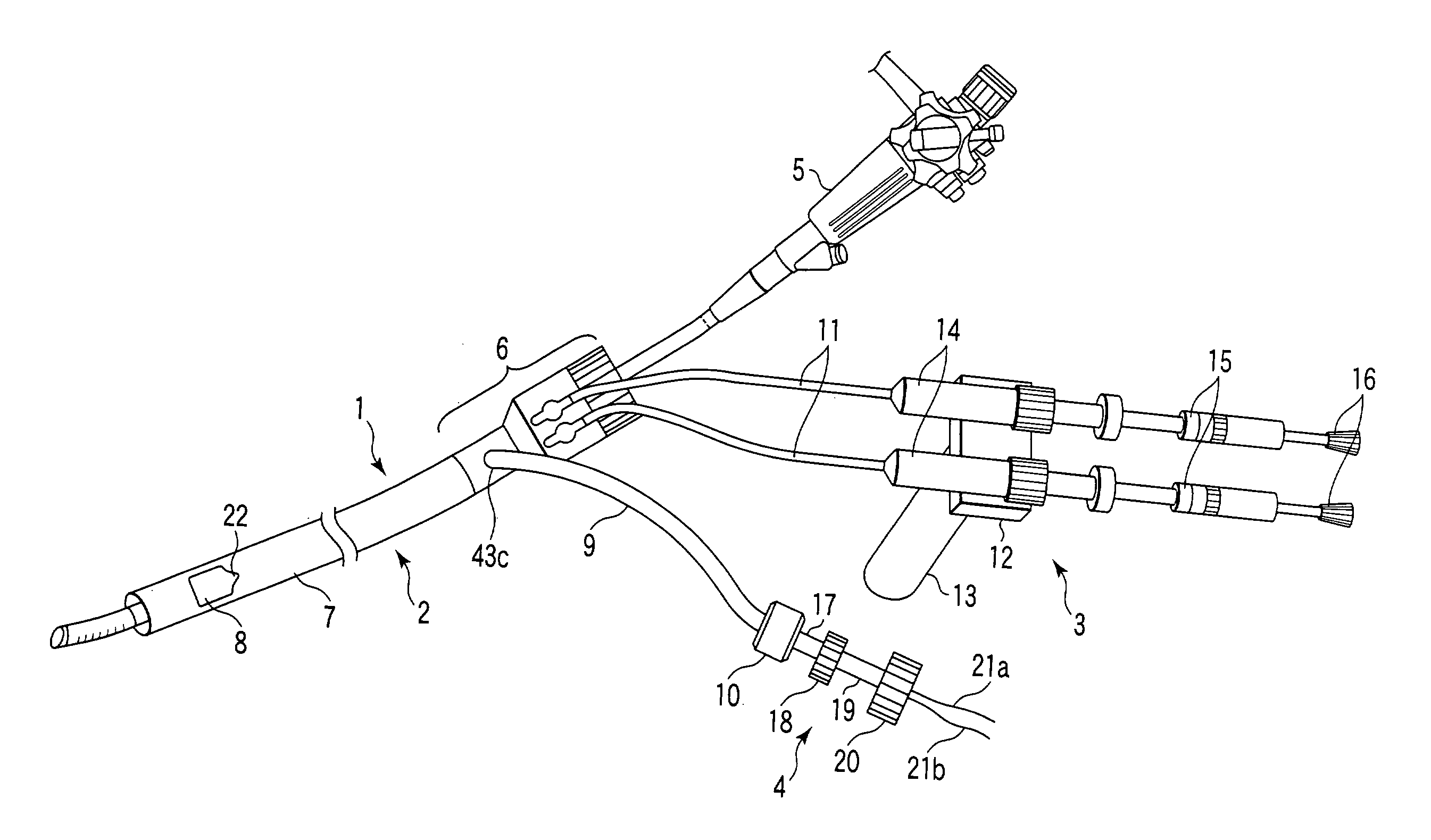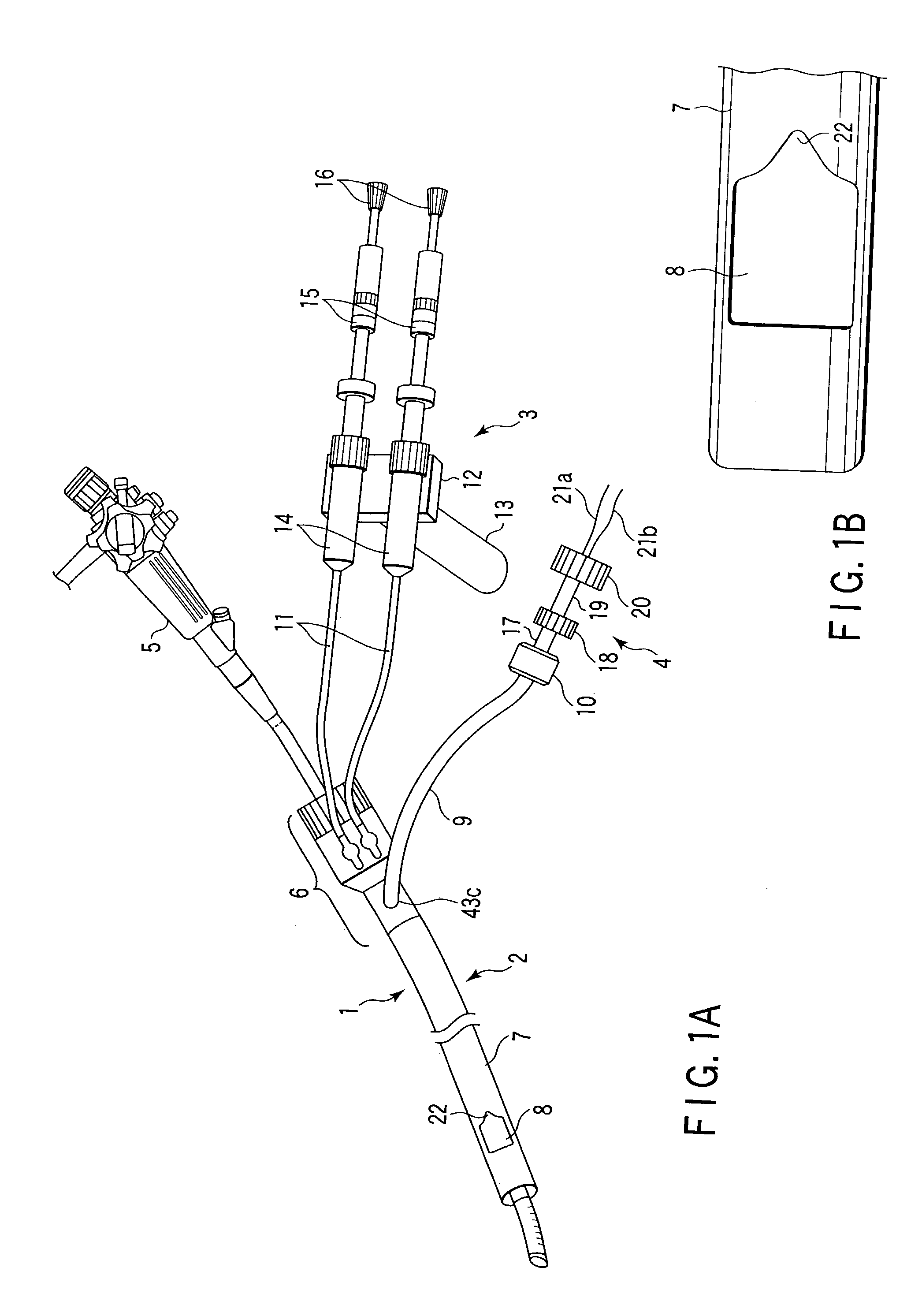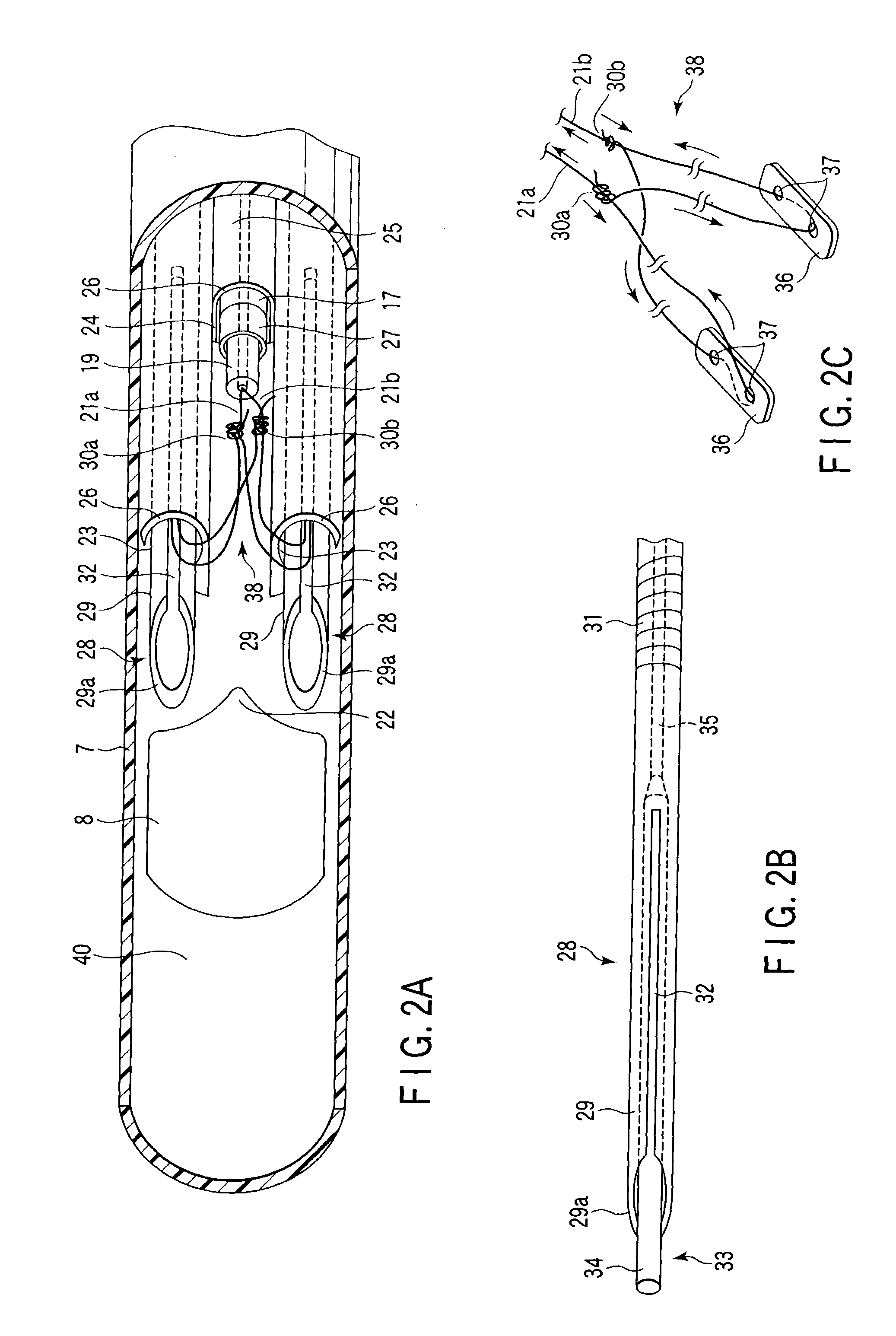Apparatus for ligating/suturing living tissues and system for resecting/suturing living tissues
a technology applied in the field of sutures for living tissues, can solve the problems of significant patient invasion, significant burden on the patient on the aspect of cost such as hospitalization cost, and significant patient pain, and achieves easy suture of a region, easy and reliable check, and easy observation
- Summary
- Abstract
- Description
- Claims
- Application Information
AI Technical Summary
Benefits of technology
Problems solved by technology
Method used
Image
Examples
first embodiment
[0145]Hereinafter, the present invention will be described with reference to FIG. 1A to FIG. 12. FIG. 1 shows an appearance of an entire suturing apparatus 1 according to the present embodiment. This suturing apparatus 1 comprises an over-tube 2, a needle manipulating section 3, a ligating device 4, a needle 28 (refer to FIG. 2A), and a ligating unit 38 (refer to FIG. 2C).
[0146]An elongated sheath section 7 is provided at the over-tube 2. This sheath section 7 is set to about 0.3 m to 2 m, for example, and preferably set to about 1 m. As shown in FIG. 1B, a side opening 8 is formed at a distal end section of the sheath section 7. Further, a connecting section 6 is arranged at a proximal end section of the sheath section 7.
[0147]Further, as shown in FIG. 3, the sheath section 7 is formed of a multi-lumen tube, i.e., in this embodiment, a four-lumen tube comprising four lumens (one endoscope lumen 25, two needle lumens 23, and one ligating lumen 24). Then, the two needle lumens 23, th...
second embodiment
[0223]FIG. 14 to FIG. 20B show the present invention. According to the present embodiment, a part of the suturing apparatus 1 according to the first embodiment (refer to FIG. 1A to FIG. 12) has been modified as follows. In the present embodiment, like elements identical to the suturing apparatus 1 of the first embodiment are designated by like reference numerals. A duplicate description is omitted here. Here, only elements different from those of the first embodiment will be described.
[0224]As shown in FIG. 14, in the over-tube 2 of the present embodiment, a suction port 53 is provided at the connecting section 6. This suction port 53 communicates with an endoscope lumen 25. One end of a connecting tube 55a of a suction apparatus 54 is removably connected to the suction port 53.
[0225]A suction source 59 is provided at the suction apparatus 54. One end of a connecting tube 55d is removably connected to this suction source 59. The other end of this connecting tube 55d is connected to ...
sixth embodiment
[0345]FIG. 30A to FIG. 36B each show the present invention. In the present embodiment, a constitution of the over-tube 2 of the suturing apparatus 1 according to the first embodiment (refer to FIG. 1A to FIG. 12) is changed as follows.
[0346]That is, in the present embodiment, the sheath section 7 of the over-tube 2 is formed of a proximal end sheath 109, an intermediate sheath 110, and a distal end sheath 111, as shown in FIG. 30A. The inner and outer diameters of the proximal end sheath 109, the intermediate sheath 110, and the distal end sheath 111 are dimensionally defined to be substantially equal to each other.
[0347]The proximal end section of the proximal end sheath 109 is connected to the distal end of the connecting section 6. The proximal end section of the intermediate sheath 110 is connected to the distal end of this proximal end sheath 109 by means of bonding or the like. The distal end sheath 111 is removably connected to the distal end of the intermediate sheath 110.
[0...
PUM
 Login to View More
Login to View More Abstract
Description
Claims
Application Information
 Login to View More
Login to View More - R&D
- Intellectual Property
- Life Sciences
- Materials
- Tech Scout
- Unparalleled Data Quality
- Higher Quality Content
- 60% Fewer Hallucinations
Browse by: Latest US Patents, China's latest patents, Technical Efficacy Thesaurus, Application Domain, Technology Topic, Popular Technical Reports.
© 2025 PatSnap. All rights reserved.Legal|Privacy policy|Modern Slavery Act Transparency Statement|Sitemap|About US| Contact US: help@patsnap.com



